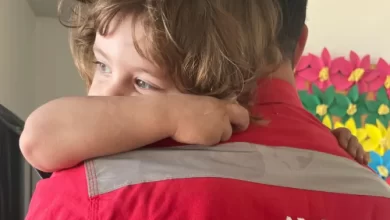Lawsuit: Los Angeles Co. Fire Dept. ‘retaliated’ against Christian employee who refused to raise Pride flag
CNA Newsroom, Jun 1, 2024 / 10:00 am (CNA).
A Christian employee has filed a lawsuit against the Los Angeles County Fire Department in which he alleges he was subjected to “retaliation” and “religious discrimination” for refusing to raise a well-known Pride theme flag while he was working.
A veteran county employee, Captain Jeffrey Little alleges that the fire department violated his religious freedom when they ordered him to raise the so-called “Progress Pride” flag after he requested a religious exemption.
The lawsuit alleges that Little was suspended from his role in a department unit due to the dispute and subjected to an internal investigation. It also alleges that Little’s superiors breached his privacy by informing unauthorized persons about his request for a religious accommodation, which led to him receiving a death threat in the mail.
In his request for an accommodation, Little informed the department that he could not raise the flag because it would convey an “endorsement and or celebration of the messages on various sexual behaviors (among other topics) associated with the [flag],” the lawsuit states. His request lists various Bible verses regarding homosexuality and sexual ethics, which are in opposition to the message conveyed by the flag.
The department initially granted him an exemption on June 19, 2023, but then rescinded that exemption on June 21. The lawsuit states that Little took down the Pride flags at his station on June 21 before he had been told his accommodation had been revoked. Upon being told his accommodation was no longer in place, he alleges one of his superiors ordered him to raise the flags.
According to the lawsuit, one of Little’s superiors told him: “Your religious beliefs do not matter; you are an LA County employee.”
The lawsuit, which the Catholic legal group Thomas More Society filed on behalf of Little, claims that the fire department’s actions violated his constitutional rights and other laws. The complaint alleges First Amendment violations for allegedly limiting his religious freedom and compelling speech. It further alleges violations of the Civil Rights Act and California’s Fair Employment and Housing Act.
Paul Jonna, who serves as special counsel for the Thomas More Society, told CNA that Little’s accommodation request was “extremely narrow,” essentially asking the department to “please have someone else” raise or lower the flag. Unfortunately, he said the reaction from the fire department shows “religious beliefs are not tolerated.”
Jonna added that the Progress Pride flag conveys “a whole range of disputed viewpoints: religious and moral.” Yet, some individuals are seeking “to normalize something that’s very controversial” and “shove their ideological views on everybody,” in violation of the law.
Many Christians, Jonna said, are “too afraid to challenge government abuse or [are unaware of] their rights,” but added that “when people do [speak up], oftentimes they’re victorious.
Little’s lawyers are asking that the court award him back pay, including all wages and benefits that he would have earned, and for the court to order that he be reinstated to his former position. It also requests that the court order the fire department to grant Little a religious exemption, halt enforcement of all policies that violate religious freedom, and impose training requirements on employees whom the lawsuit alleges acted in violation of his rights.
Jonna said in a statement that Little “is an upstanding American, a devout Christian father, and a public servant.”
“He courageously stood on principle and asked for a simple religious accommodation — which he is rightfully and legally due — only to be first denied, then threatened, harassed [and] discriminated and retaliated against for his widely shared Christian religious beliefs,” Jonna said.
When reached for comment by CNA, a spokesperson for the Los Angeles County Fire Department said: “We cannot comment on personnel issues or any ongoing litigation.”





